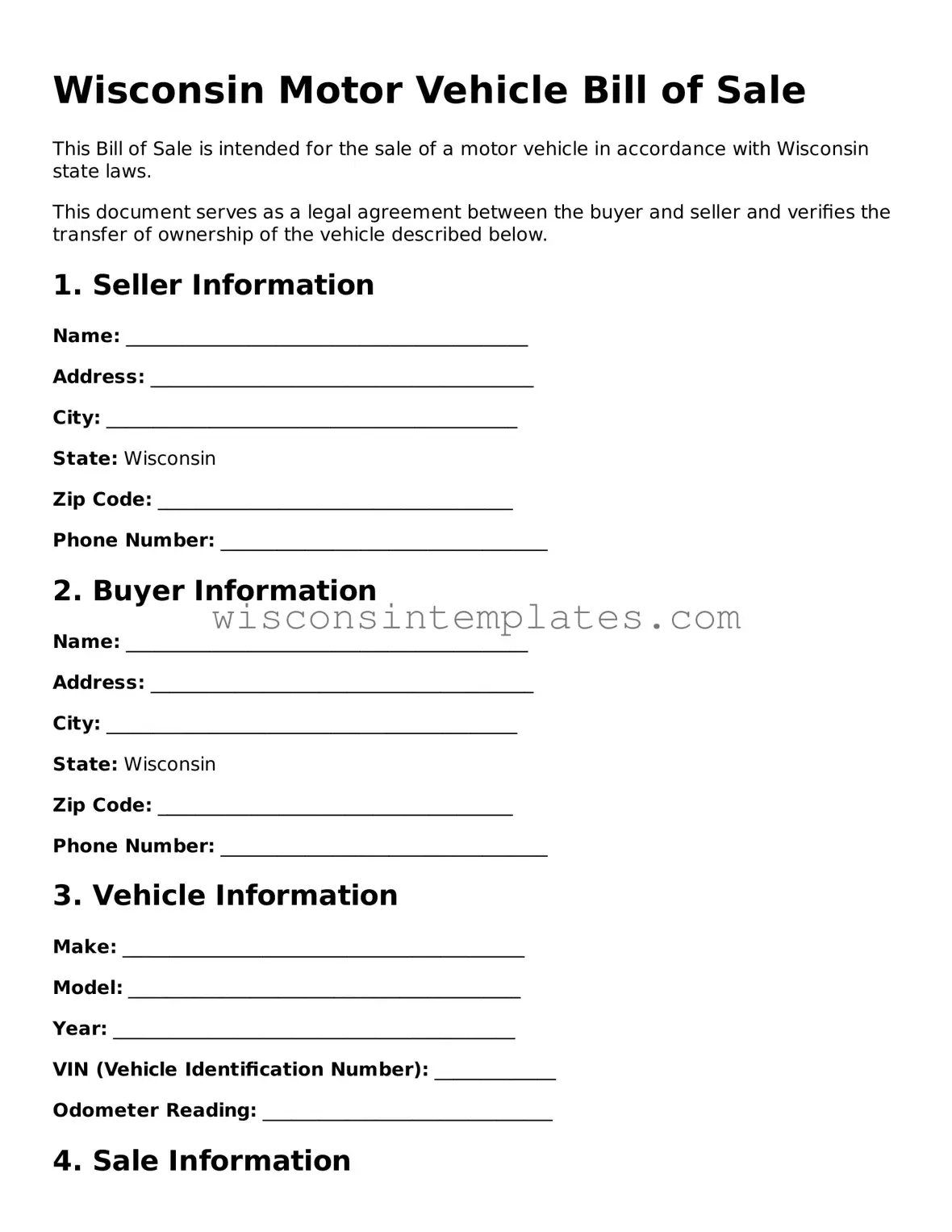Legal Motor Vehicle Bill of Sale Form for Wisconsin State
The Wisconsin Motor Vehicle Bill of Sale form is a legal document used to record the transfer of ownership of a motor vehicle from one party to another. This form includes essential information such as the buyer's and seller's details, vehicle description, and the sale price. Completing this document ensures a smooth transaction and provides proof of ownership for both parties involved.
Launch Editor Now
